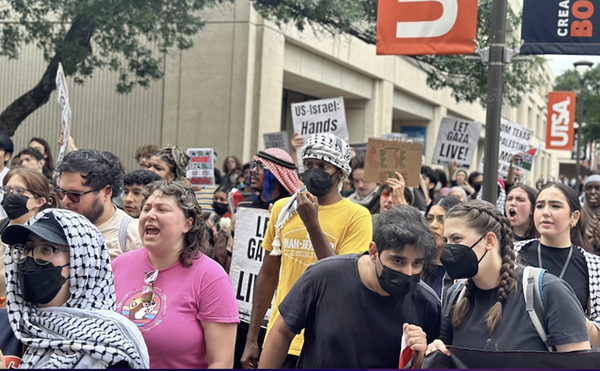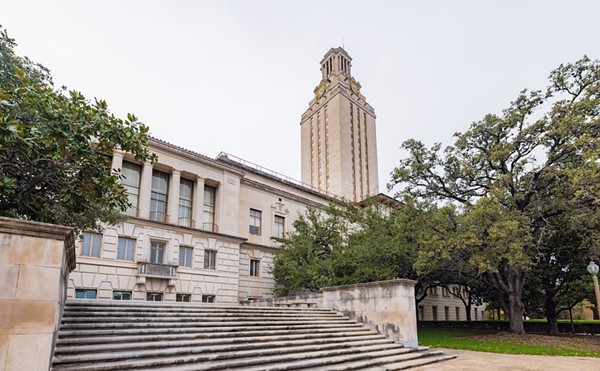But even when mute, the springs remind us of our precarious toehold in this formerly verdant land, and of their impact on human society in South Texas.
Three-hundred-and-fifteen-years ago, the green terrain — “the most beautiful in New Spain” — caught the eye of the first Spanish entrada, as it marched into the region. The San Pedro Springs were also the stage on which U. S. expansionary ambitions were rehearsed. In preparation for the Mexican-American War (1846-48), 1,400 soldiers drilled in San Pedro Park, which was also the construction site for the pontoon bridges they would later erect on the Rio Grande to invade Mexico. There, too, did the final act of the conflict — surveying the two countries’ new borders — get its start. Commissioner John Bartlett, who resided in the park while provisioning his wagon train, set off on an arduous trek from the Rio Grande Valley to San Diego to map the westward course of empire.
Within a decade, this New-World colossus began to fracture along a North-South fault line, the tremors of which rocked San Antonio. The city was pro-Union, a consequence of its large German population and abiding gratitude to a federal army that provided protection and considerable economic growth. It gave full vent to its anti-secession sentiments when Texas Governor Sam Houston, the standard-bearer for Unionists, came to town in October 1860. Accompanied to San Pedro Springs by the “city band and a large concourse of citizens in carriages and on horseback,” the aged patriot received a rousing welcome from more than 2,000 citizens who crowded into “the beautiful grove,” enthusiastically applauding his riveting, two-hour, extemporaneous attack on “Sectionalism and Disunion.”
The war brought some peace to the land: In December 1863, City Council passed an ordinance to “prevent the Encampment of Troops, (Ox and Mule) Trains, or other body of Men with in the San Pedro Springs Reserve and prohibiting the defiling of said Springs.” Its enforcement led to the park’s renovation into a late-19th-century pastoral-pleasure ground, scene of civic celebrations and familial rites. Yet some had greater access to these festivities than others, as the park — like the city — became increasingly segregated. When the first trolley line ran up to the park in 1878, it sparked a real-estate boom that catered to the elite, whose large homes gained value due to their parkland proximity; a rigid racial divide was manifest every time African Americans marched in local parades that ended at the springs, but then were forced to picnic elsewhere. The open space was not open.
Until the late 20th century, when the River Walk supplanted it, San Pedro Springs remained the communal heart, a preeminence we reenact each April as we gather under its massive cypress trees to commemorate Earth Day. And, should winter storms have raised the water table sufficiently to push a modest flow up through the limestone seams, we’ll remember why the springs long served as San Antonio’s pulse.


















